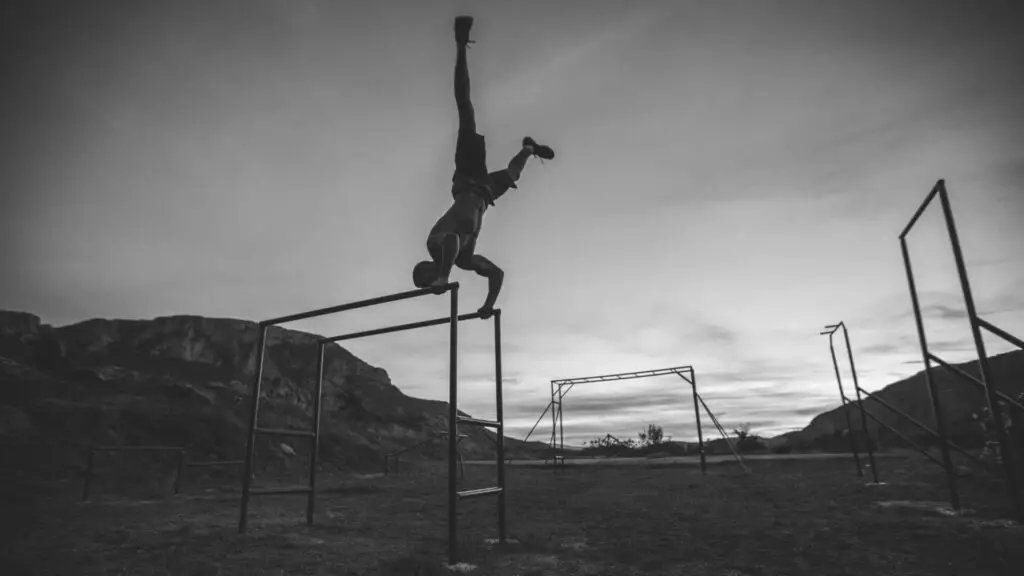Calisthenics is a form of exercise that can help individuals build muscle mass and improve their overall physical fitness. Despite the common misconception that calisthenic athletes are necessarily skinny, this is not always the case. In fact, many people who engage in calisthenics are actually quite muscular. This may be due to the fact that calisthenics requires a certain level of physical strength and endurance, which can result in the development of muscular muscles.
Additionally, it is not necessarily true that only thin people can perform calisthenics, as anyone can learn and practice these movements with sufficient effort. It is also worth noting that calisthenics is not exclusively for athletes or fitness models, and can be practiced by people of all levels of fitness. Overall, calisthenics is a versatile and effective form of exercise that can help individuals build muscle mass and improve their physical fitness, regardless of their body type or level of athleticism.
Why Are Most Calisthenics Athletes Skinny
They Eat Healthily:
It is common for calisthenics athletes to be skinny due to their focus on healthy eating habits and regular exercise. Calisthenics, also known as bodyweight exercises, involves using one’s own body weight as resistance and can be done with minimal equipment and space.
This form of exercise is often chosen by people who want to get fit without spending a lot of money, and it is accessible to people of all fitness levels and body types due to the ability to modify the exercises. As a result, calisthenics has become a popular choice among athletes and those interested in general fitness.
They Do Not Use Steroids:
It is not accurate to say that most calisthenics athletes are skinny because they do not use steroids. Calisthenics, or bodyweight exercises, can be a good way to get fit and stay healthy, and many people who practice calisthenics are lean due to their focus on healthy eating habits and regular exercise. However, the use of steroids or other performance-enhancing drugs is not a necessary factor in achieving a lean or fit physique through calisthenics.
In fact, steroids have been linked with a number of health problems, including an increased risk of heart disease, cancer, and stroke. The use of steroids or other performance-enhancing drugs is generally not recommended due to the potential negative health effects and legal consequences. It is important for athletes and fitness enthusiasts to focus on safe and healthy training methods rather than relying on potentially harmful substances.
They Train Often:
It is possible that most calisthenics athletes are skinny because they train often, as regular exercise and physical activity can help maintain a healthy body weight and physique. Calisthenics, or bodyweight exercises, involves using one’s own body weight as resistance and can be a good way to get fit and stay healthy. Many people who practice calisthenics tend to be lean due to their focus on regular exercise and healthy eating habits.
However, it is important to note that the relationship between exercise and body weight is complex and can be influenced by a variety of factors, including genetics, diet, and overall lifestyle. While regular exercise can help maintain a healthy weight, it is not the only factor that determines an individual’s body composition.
Additionally, many of the moves involve bodyweight exercises that can be modified to make them more challenging. As a result, most people who train in calisthenics tend to shed relatively more calories resulting skinny body.
They Do Cardio Training:
Calisthenics athletes, like any athletes, can have a wide range of body types and sizes. Some calisthenics athletes may be skinny due to a combination of factors such as genetics, diet, and the volume and intensity of their workouts.
Cardio training, such as running or cycling, can help improve cardiovascular fitness and burn calories, which may contribute to weight loss or maintenance in some individuals. However, it is not the only factor that determines body size or shape.
Calisthenics, which typically involves bodyweight exercises such as push-ups, squats, and pull-ups, can also help improve muscle strength and endurance. Some calisthenics athletes may incorporate cardio training into their workouts, but it is not necessarily a requirement for all calisthenics athletes.
It is important to note that body size and shape are not necessarily indicators of fitness or health. It is important to focus on overall health and well-being rather than trying to achieve a specific body size or shape. It is important to find a balanced approach to exercise and nutrition that works for you and meets your individual goals and needs.
Final Thoughts
There is no definitive conclusion about why most calisthenics athletes are skinny. Some factors that may contribute to a leaner physique in calisthenics athletes include genetics, diet, the volume and intensity of their workouts, and the body mechanics involved in calisthenics exercises.
However, it is important to note that body size and shape are not necessarily indicators of fitness or health. It is important to focus on overall health and well-being rather than trying to achieve a specific body size or shape. It is important to find a balanced approach to exercise and nutrition that works for you and meets your individual goals and needs.

